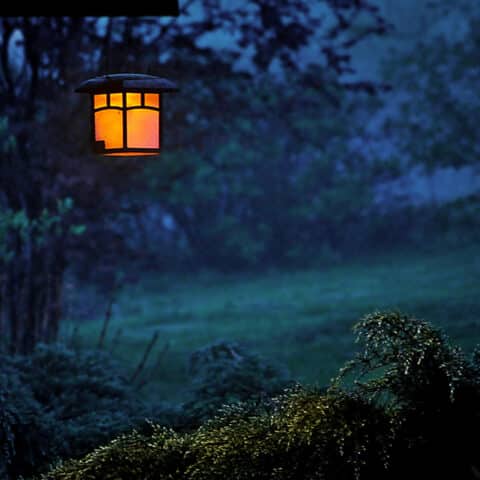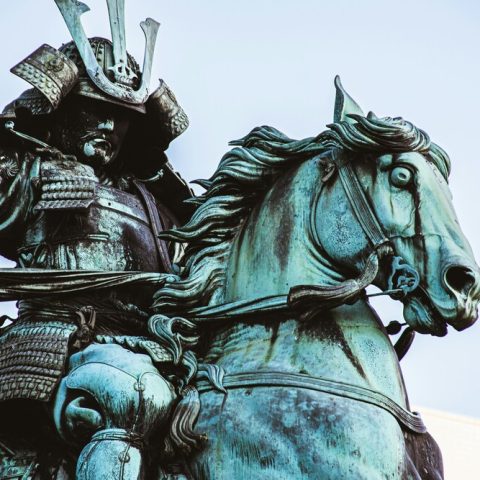
Japan contains approximately 10% of the world’s active volcanoes, boasting over 27,000 natural hot springs. Hot springs, known as “onsen” are beautiful gifts from god where warm water comes naturally to the surface from underground. They have been loved by the Japanese since ancient times and are considered sacred and believed to heal illnesses and injuries.
Firstly let me explain what an onsen is. The definition is “thermal water, steam, and other gasses (excluding natural gas with hydrocarbons as the main component) emanating from the ground, with a temperature of 25 degrees Celsius or higher or below 25 degrees Celsius, but containing specified amounts of any of the 19 designated substances.”
When it comes to hot springs, they are not all the same, and they are categorized into various types. Understanding the characteristics of spring quality, such as the color and texture of water, allows you to choose an onsen destination based on your preferences. In my opinion, the best recommendation is sulfate springs. This is because it offers heat retention and moisturizing effects, providing hydration to dry and rough skin.
Here, I will explain the types and features of Japanese onsen.

Baby taking a bath. Photo Credit: sevenluckygods
Simple Onsen
A simple onsen fits the definition of having a “source temperature of 25°C or higher” but doesn’t reach the specified content levels. Although a weak hot spring may not sound very attractive, it is a suitable option for everyone, from children to the elderly, due to its low stimulation.
Health Benefits:
Insomnia, depressive symptoms, autonomic nervous system instability, and more. (Alkaline simple onsen also offers benefits for beautiful skin.)
Chloride Onsen
This one is like salty and clear seawater. The salt on your skin helps retain heat by preventing sweat from evaporating, and it is a good choice for old people. It’s known to have sterilizing effects and is a quite common onsen in Japan. Some places even allow drinking it, and it can help with stomach issues and chronic constipation.
However, if you have conditions like salt restrictions, high blood pressure, heart or kidney problems, or swelling, it’s better to avoid it. Also, people with allergies or sensitive skin should avoid soaking for long periods.
Health Benefits:
Cuts, burns, sensitivity to colds, menstrual disorders, infertility, constipation, and more.
Carbon Dioxide Onsen
This onsen contains carbon dioxide gas and generally has lower temperatures. The bubbles directly stimulate the skin, improving blood circulation, and lowering blood pressure. When you drink it, it boosts your digestion, and provides diuretic, calming, and appetite-enhancing effects.
Health Benefits:
Sensitivity to cold, heart disease, hypertension, autonomic nervous system instability, menopausal disorders, infertility, and reduced gastrointestinal function.

Japanese hot spring. Photo Credit: ぱたくそ
Sulfate Onsen
This one is often called “healing waters.” They are said to be beneficial for conditions like hypertension and stroke, and there are claims that they can reduce pain. Sulfate might sound highly acidic and irritating to hot springs, but it has no relation to them, so no worries. Generally, it is colorless and odorless, and you can even drink the water depending on the place.
Additionally, healing water is good for beautiful skin. As they have an amazing effect on dry skin, it is suggested that after soaking in the hot spring for 1-2 minutes, dry the skin and repeat the same process.
Health Benefits:
Cuts, dry skin, stroke, liver disease, diabetes, hypertension, and treats high cholesterol.
Hydrogen Carbonate Onsen
It is representative of the beauty bath, having a cleansing effect that washes away dead skin and pore dirt. On the other hand, moisture evaporates from the skin after bathing, so be sure to apply moisturizer as soon as possible to avoid dry skin. If you drink it, it can help improve lifestyle diseases such as diabetes, gout, and liver disease.
Health Benefits:
Cuts, burns, chronic skin conditions, diabetes, gout, liver disease, lifestyle diseases, and more.
Iron-Containing Onsen
Due to the high iron content, these Onsen often have a brown and reddish color. Additionally, it smells like rusted iron and is believed to have a strong warming effect on the body from the inside. Also, it is effective for women who face problems with anemia and menopausal symptoms, especially when drinking it.
Health Benefits:
Anemia, rheumatic diseases, menopausal disorders, underdeveloped uterus, chronic eczema, ringworm, and menstrual disorders.

Monkey taking a bath at Jigokudani Yaen Koen. Photo Credit: N.Maico
Sulfur Onsen
Sulfur spring is popular for its unique stink, often described as similar to rotten eggs, and “anti-blemishes baths.” Due to its detox effect, sulfur Onsen is also used to relieve metal allergy and drug addiction.
However, it can be strong, so be careful for those who have dry skin, are older adults, and children. If you have diabetes, drinking sulfur spring water may be beneficial. But, staying in the bath for too long is a little risky, as it can make you feel sick.
Health Benefits:
Atopic dermatitis, chronic eczema, psoriasis, hypertension, diabetes, and more.
Acidic Springs
This one is known for its antibacterial benefits, particularly effective for skin problems. Since this type of spring water may cause a tingling feeling, it’s recommended to rinse off with a shower completely after bathing. In addition, there is a little unique smell.
Health Benefits:
Atopic dermatitis, psoriasis, acne, athlete’s foot, impetigo, and chronic eczema.
Radioactive Onsen
Due to the term “radioactive,” it may sound scary. However, radioactive springs are secure therapeutic hot springs recognized by the Ministry of the Environment. It is said that soaking in this Onsen boosts the immune system, making it a rare bath that is suitable for treating gout.
On the other hand, please note that if your body is weakened, such as during a fever or severe anemia, you should avoid taking baths. Moreover, Radioactive Onsen also can cause dizzy feelings more easily.
Health Benefits:
Gout, rheumatoid arthritis, ankylosing spondylitis, autonomic nervous system regulation, and anti-allergy effects.
Iodine Onsen
Typically, this new spring quality was added in 2014 and has a yellow or brown color. Unfortunately, the specific effect of this type of spring hasn’t been officially recognized yet, but it has a powerful antibacterial effect against high cholesterol when you drink it. It’s also said to improve beautiful skin. However, people with hyperthyroidism should not drink this water.
Health Benefits:
High cholesterol, beautiful skin.

Onsen manner. Photo Credits: Leung Cho Pan, Getty Images, and 丸岡ジョー (Created by Chisato)
How to Onsen?
I respect the diversity of cultures and understand that each culture has different common sense. In Japan, it’s important to know the rules to ensure a comfortable experience for everyone, especially when using Japanese hot springs, where everyone is naked. Therefore, I will guide you on how to properly enjoy an onsen in Japan to avoid any misunderstandings.

Private Bath at Hirayukan Onsen. Photo Credit: 平湯温泉観光協会
As I mentioned before, wearing a swimsuit is not permitted in public baths in Japan. Unfortunately, people with tattoos may also face restrictions at some onsen. However, some places welcome tattoos, and many onsens offer private baths that can be reserved. So make sure to check before going.
Speaking of private baths, there are also Japanese-style hotels called “Ryokan.” They usually offer both public onsen and private onsen in the rooms depending on the room category. The hot spring experience is included in the hotel fees, allowing you to enjoy their hospitality, food, and culture at the same time!

Honke Bankyu – Yukata
In Japanese ryokan, yukata are often provided. Some places let you choose the design, while others already have them in your room. It is not like regular yukata for going out, but those prepared in Ryokan are meant for relaxation, so wearing them is very simple.
As I said, it is simple, but make sure you wear the yukata properly, with the left side over the right (wearing a yukata with the right side over the left is how dead people wear it), and then you can tie the obi. Since it is casual, relaxed clothing, feel free to put it on whenever you’d like. If you have any questions, don’t hesitate to ask the landlady!

Honke Bankyu Ryokan
Keep in mind that dinner times are often scheduled, so be sure to check your assigned time and plan your visit to the onsen accordingly!!!
Once you’ve donned your yukata in your room, it’s time to head to the onsen and immerse yourself in the relaxing experience!! Usually, there are two types of bath curtains, one in blue with the word “男” (men) and the other in red with the word “女” (women). So please enter the correct one. Now, I will explain how to onsen:
- Store your shoes in the locker and pay for the ticket at the reception.
Sometimes, soap, shampoo, and towels are not provided depending on the place, so please check at the reception to buy them or prepare them yourself. - Take off all of your clothes in the changing room.
- Put your clothes in a locker or basket.
Most lockers take coins, so be sure to prepare some coins. - Wash your body in the washing area before getting into the onsen.
It is recommended to bring at least one towel with you to clean and dry your body. - Clean the chairs and items after you are done using them.
- When taking a bath, please don’t dip your hair and towel in the water.
Don’t swim, and speak too loudly either. - After taking a bath, you can take a quick shower again.
- Wipe down your body before returning to the changing room.
- Finally, your first Onsen experience is done.
It is popular to have a yogurt drink or coffee milk after the bath, so I highly recommend you try it.

Coffee milk. Photo Credit: himawariin
Lastly, Japanese onsen is not just about baths, it’s more about relaxation, tradition, and nature. Therefore, if you are seeking a healing, cultural, or peaceful experience, be sure to add it to your travel list and visit a Japanese onsen! In this blog, we guided you through 10 types of spring quality and provided tips on how to enjoy onsen in Japan. We hope it helped you plan your trip with more insight and enjoyment.
Please note that you should always check whether the facility you visit permits drinking the spring water. Additionally, if you have any serious medical conditions or are pregnant, it’s best to consult with your doctor before bathing in hot springs.
Book a personal travel consulting call with our experts to get great tips for your trip and suggestions about off-the-beaten-track destinations in Japan!




